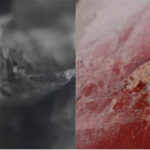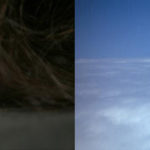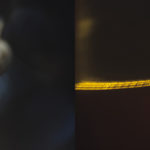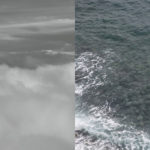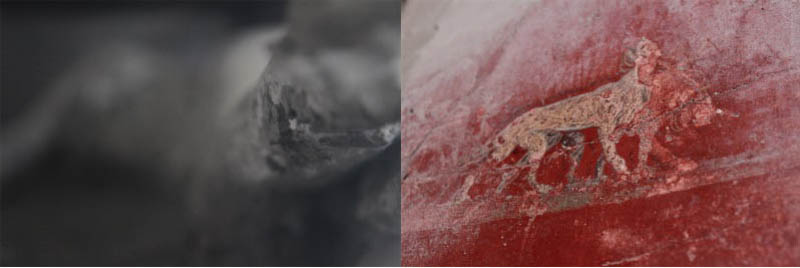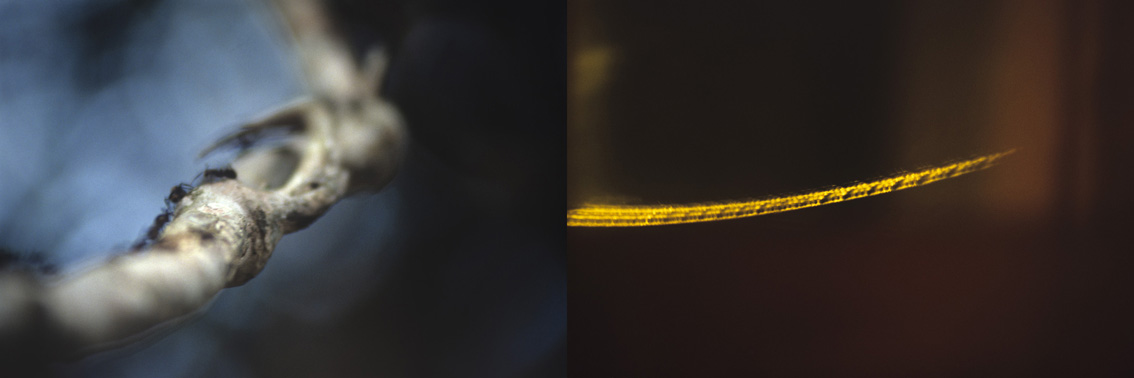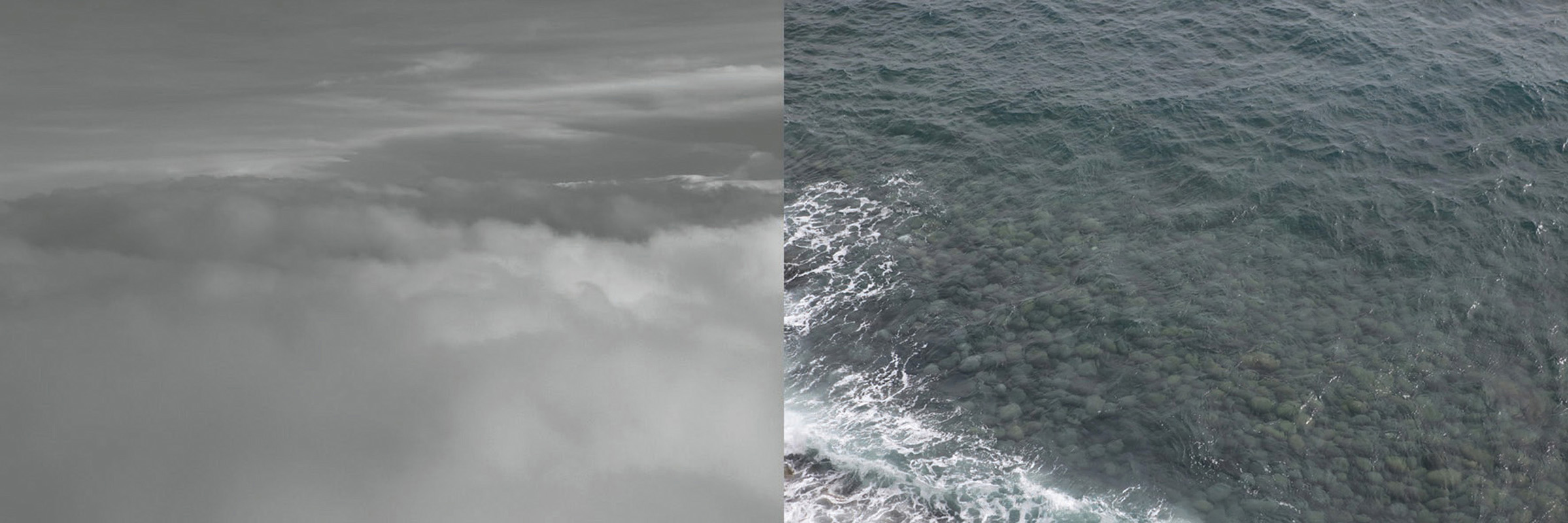Visual artist and photographer. About her work, it has already been written that, when establishing a relationship between the real and the imaginary – desires and limits -, and that using different techniques, incorporated by photography, drawings, objects, words, new media, such as elements present in the fine arts expression of her work, and the development of a technique of drawing-painture in photographic negative, with India ink and pigments for photographically amplified photograph or projected from the original, their works present an inquisitor and contemplative look on the elements of the daily life, the unquestionable dualities of being. The creative expression, the artist understands, may be in all acts of the daily life. Thus, the photograph and the video may be accompanied by drawing, technology, objects and, in particular, words and music in their compositions, where fine art and conceptual meet. Thus, with this creation, it establishes a dialog with the human being, with its presence in nature, with their own human nature, with time, with the word.
She was born in Salvador in 1976. Graduated in Psychology in 1999. Autodidact, she started photographing at 7 years old. She attended the atelier of the Argentinian painter Alejandro Kantemiroff, with whom developed the study of the drawing with research and expression of the unconscious, concept that she deepened in the following years, in her work with photography. In 2001, she started to participated in several collective and individual exhibitions: MAM-BA, Museu Afro-Brasil (SP), Biennial of the Recôncavo, Goethe Institut, Centro Cultural da Caixa, Aliança Francesa, ACBEU, Mônica Filgueiras Galeria (SP), among others. Her work is in the collection of the Museu de Arte Moderna of Bahia. In 2009, she made an artistic residency in Italy, award granted by Fundo de Cultura of the state of Bahia. In 2010, she received the Prêmio Brasil Arte Contemporânea Award from Fundação Bienal de São Paulo with the work “O mar que resta” [The sea that remains], which she developed in Italy. In January, 2011, she made her fist exhibition outside Brazil, in Milan, Italy.
Your first award was for a project in which you developed the technique of drawing-painting on a photographic film, after amplifying the negative of this image. How was it to perform this exhibition in which there are two dimensions and techniques, the fine-arts artist and photographer?
For me, there is no division between the artist and the photographer. What exists is the creative possibility that makes use of a certain technique in a certain moment. That was a period in which I drew a lot and, at the same time, photographed. So, I experimented several pigments on the film until I found the technique to express what I wanted. I used a matrix of minimal dimensions, that was the 35 mm film, to reveal nuances of trace in an amplified manner. It was a solitary and very pleasant moment. Hosting an exhibition always means the moment to share this with others.
What is art for you? Work? A form of expression?
For me, everything is work! Expressing yourself is also a work. The problem is that, usually, when these things are separated, work remains with an immediate connection with the obligation or displeasure. It is, undoubtedly, a privilege to exercise a form of creative expression that is configured as work and that we call art. Today, I think that art is a form of life.
Your themes project themselves between dual scenes, for example, the real and the imaginary of images. How is the theme chosen, which you, then, develop? Is there a project? A concept? How do you construct your themes? Is there a main theme in your photography, or is it only done to make a series?
When reading questions, I have the feeling of answering with a single text. Like the way I see the unfoldings of my work so far: an invisible thread seems to connect with all things. I don’t dedicate myself to thinking about it at first. I allow the images, words, objects, videos arise in the natural pathway of my life. Only then the connections are made and this starts to have utmost importance. The connections seem to be the great privilege of our brain and, for me, a great source of satisfaction. That doesn’t mean there isn’t an effort, yes, there is, always!
What moment do you consider as your beginning as a professional photographer, or artist?
I think it’s difficult to register a moment in which something is settled. I started to photograph very early, still as a child, at 7 years old I already had a camera, a “little disposable camera” named “love”. Of course, for many years, I didn’t even think in a profession. I attended Psychology in the university, course that I graduated from, as a commitment, in 1999. In several different moments. Art was already a part of me. I’d say that, if there is a moment in which things were settled, it would be in 1999.
Is photography a visual matter of the art or a technical field?
Both things. Because there is no way one not dialoging with the other at the moment of execution. Even if the author always have their style and use the technique to express something of their style, the technique also establishes itself as language.
How is your capture of images performed? Street, studio. And what does your photography try to reproduce when captured? What about the incorporation of other elements collectively? What is your reading of you photos?
Dualism is an observation perspective, since the moment, still as a child, which I became aware that the things happened simultaneously: death and life. Today, apart from dualism, I think in simultaneity. There is a poem by T. S. Eliot called “Burnt Norton”, which I used in a work, and that I’d like to quote a passage here: “… O tempo passado e o tempo futuro/ O que podia ter sido e o que foi/ Tendem para um só fim, que é sempre presente.” (“…Time past and time future/What might have been and what has been/ Point to one end, which is always present.”).
It is complex to do a reading of your own production, don’t you think? What I seek is to create something that accompanies me for a fraction of time.
We are living the time of the digital photography. What is your relation to it?
Absolutely natural. I find it amazing what technological advancements have brought. Together with it, there is only more work to keep the files and more time dedicated to organize. The feeling that everything may suddenly disappear is bigger!
Is there a distance between the photographer and the photo? Between the artist and their fine-arts expression?
I believe that, if there is a distance between the artist and their fine-arts expression, what that person produces, then, for me, it isn’t art.
What influences do you consider essential for becoming the photographer you are?
Everything that composes my unconscious repertoire and my affections influence me. Consciously. I feel the word as my greatest influence. I feel true love for the word. In printed matters, in music, in movies… An esthetical love, above all. I find the power of the word surprising, so misaligned with the acts at many times…
How do you see the national and international photography scene today, or the fine arts as a whole?
I don’t separate creative photography from the fine arts. I look at it with some reservations to a certain “institutionalization” of many artists; with this, I’m referring to the relationships that are being established between art dealers, curators, museums, collectors and artists. But, under this perspective, I believe that the things were always more or less as they are now, right?
What I see as an amazing change is the arrival of the digital world, the internet, and the satellite TV. Today, we have access to an infinite volume of tools and information, and, of course, the artworks also are incorporated to these fantastic media, which has influenced all the process of the artistic creation. The human being, however, looks the same to me, but with more tools, that’s true.
(interview/March, 2010)


